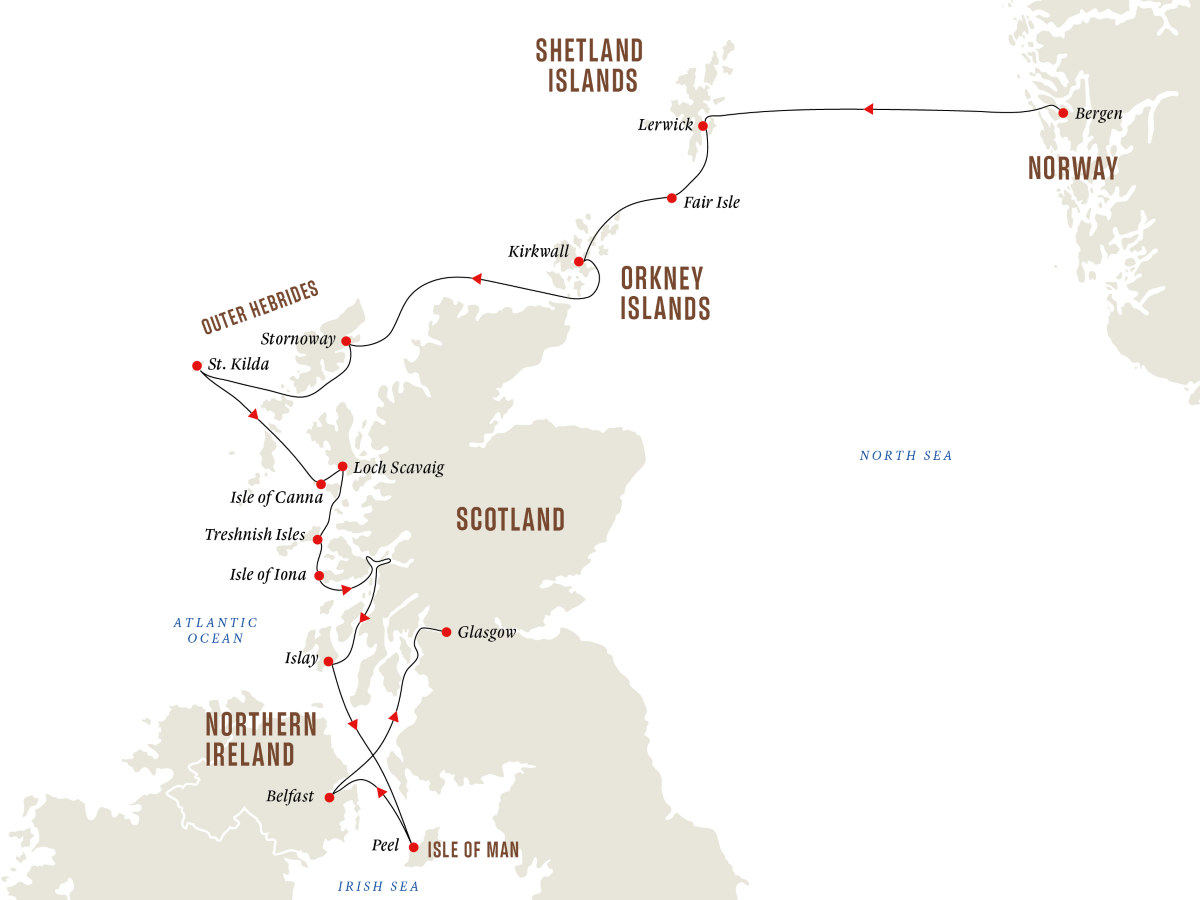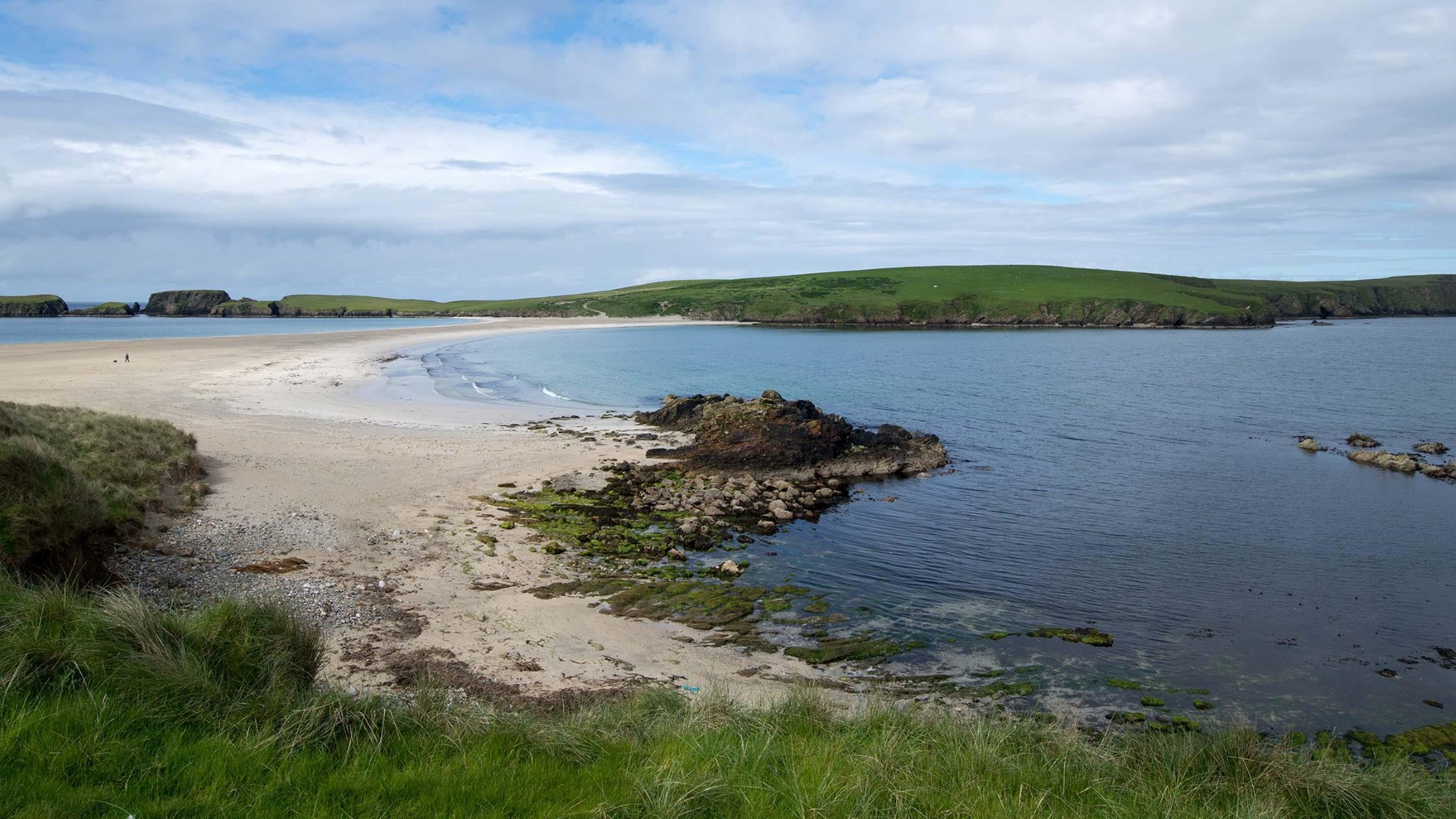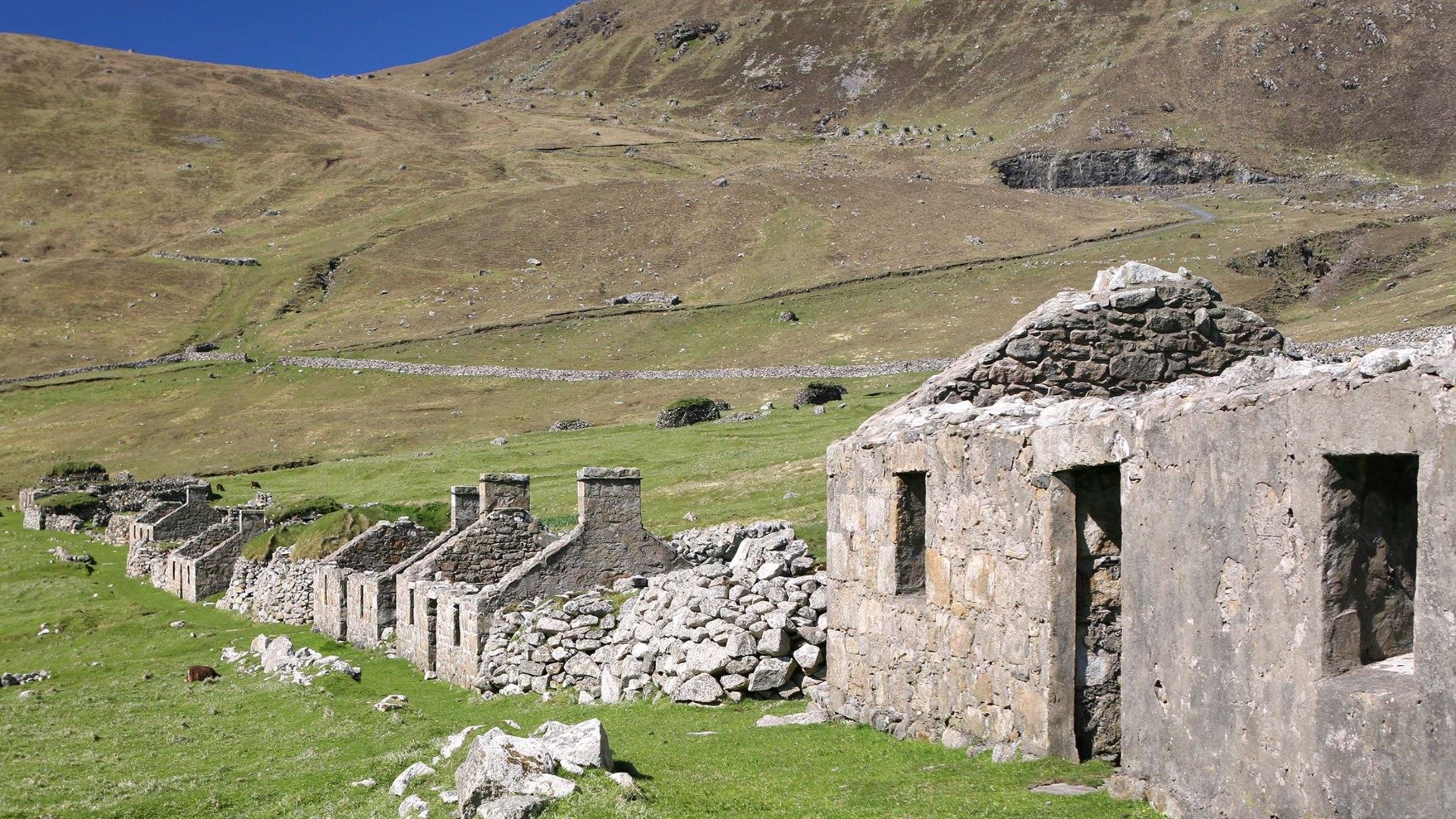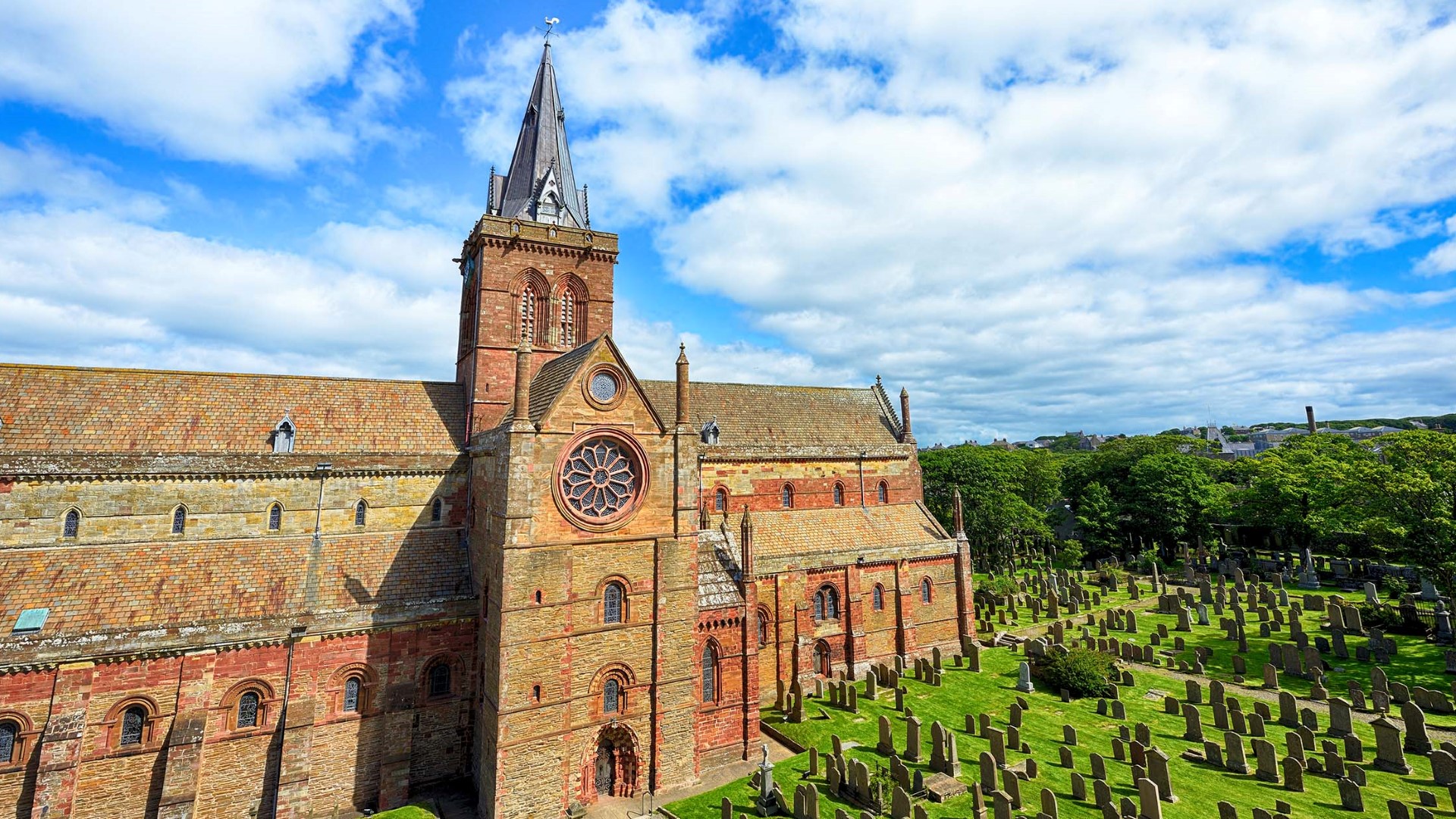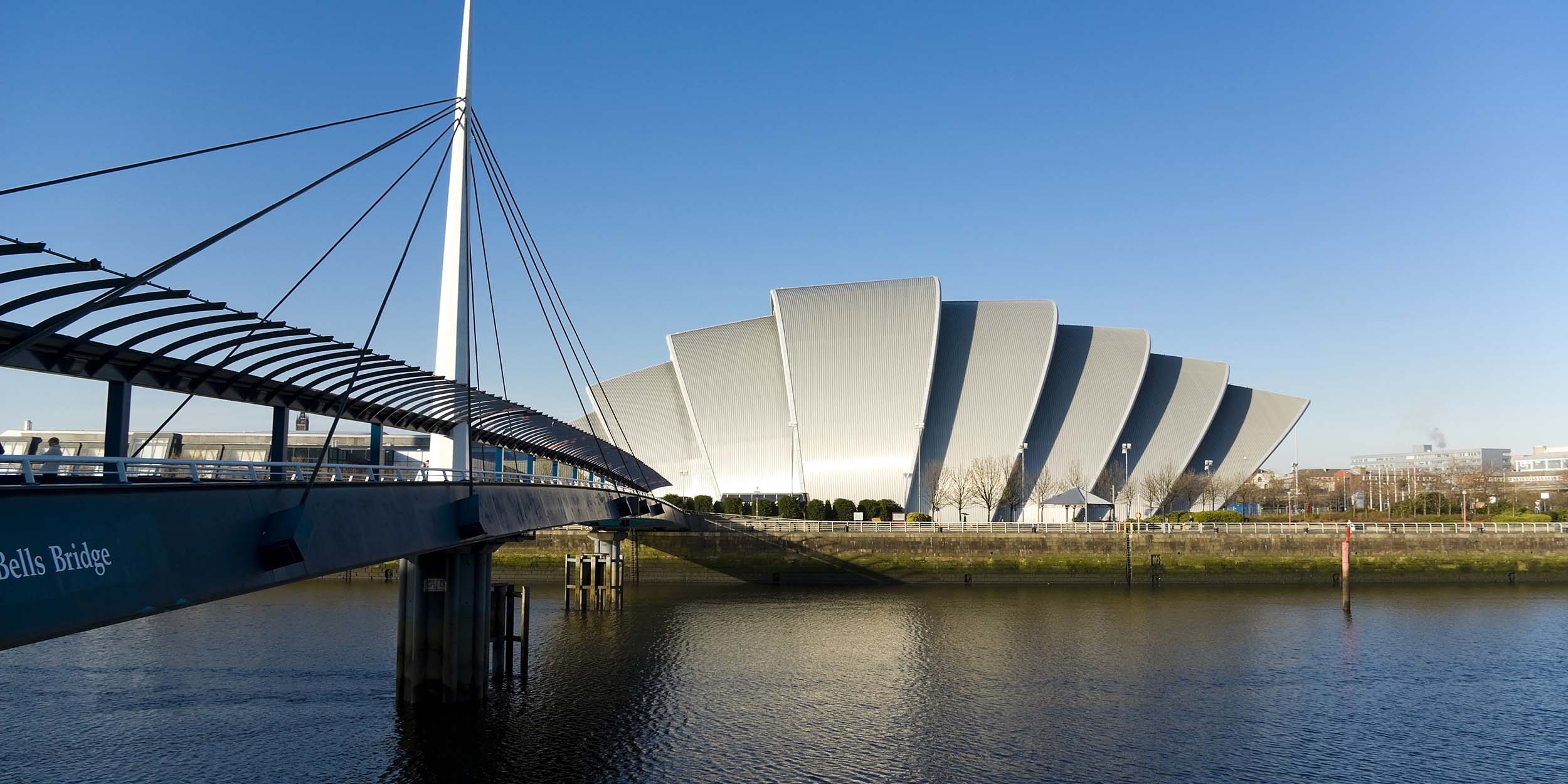The Scottish Isles – Whisky and Wildlife from the Hebrides to the Shetlands (Southbound)
CAD $TBA
13 Days / 12 Nights
Discover the rugged and magnificent isles of Scotland as we sail from Bergen to Glasgow, sampling unique malts and spotting amazing wildlife along the way, including plenty of birds.
Itinerary
Our cruise to discover the Scottish Isles departs from Bergen. If you have a few spare days before departure day, we highly recommend exploring this Norwegian coastal gem.
Founded in 1070 CE, Bergen was Norway’s capital for many years, given its perfect location as the gateway port for Hanseatic trade. The nation’s second-largest city has kept much of its local character, history, and charm. If you have a few spare days before departure day, we highly recommend exploring this great coastal destination.
No visit to Bergen is complete without seeing the historic Bryggen district, a UNESCO World Heritage Site with distinctive wooden wharves. You’ll find the area full of small boutiques selling artisanal handicrafts. Opposite Bryggen is Bergen’s famous fish market, which includes stalls cooking sumptuous fresh seafood in front of you. Take the funicular cable car up to Mount Fløyen for spectacular views of the acclaimed seven mountains.
After you’ve boarded MS Spitsbergen and checked in, pick up your complimentary expedition jacket and head to your cabin. Other than the mandatory safety briefing you must attend, you can spend your free time exploring the ship and settling in to your cabin. Check out the Science Center and the observation deck, and familiarize yourself with some of the things you can expect to learn on this fascinating cruise.
Departing Bergen, we’ll pass the colorful houses dotting the hillsides and leave behind Norway’s scenic straits, fjords, and mountains as we sail toward the North Sea. The captain will give a welcome toast and you will enjoy the first of many delicious meals. Use this time to meet your friendly Expedition Team and some of the other passengers.
Welcome to the Shetland Islands! At 106 miles from the mainland, these are Scotland’s most northerly inhabited isles. Our first port of call is the handsome town of Lerwick, which is also the islands’ capital. Founded in the 17th century as a fishing port, today Lerwick is a friendly, bustling town with handsome Victorian architecture set amid stunning scenery.
On foot, you’ll find Lerwick to be a compact and hilly town with a single shopping street: Commercial Street. This might seem odd for a ‘capital’, but remember, Shetland is like Scotland in miniature—only around 7,000 people live here. Explore its narrow pedestrian lanes it and you’ll discover dinky shops selling everything from Shetland whiskies and boiled sweets to woolen sweaters and locally made fudge.
The old waterfront is still active with visiting yachts and working fishing boats. Down here, you’ll also find the Shetland Museum. There’s a fascinating overview inside of the islands’ archeological heritage, including artifacts and a model of the famous Jarlshof prehistoric complex in the south of the island.
Take a stroll over to Fort Charlotte, a five-sided fort built during the Anglo-Dutch war of 1652. Not far away is the magisterial town hall, which looms over much of Lerwick and could almost be mistaken for a castle. Its inside is just as splendid, with amazing stained-glass windows that tell the tale of Shetland.
This wider island boasts some of Shetland’s most attractive scenery and an extraordinary concentration of archeological sites, including two remarkable Iron Age villages, only a short distance from Lerwick. The Croft House Museum is also well worth a visit. It gives you a taste of how tough life was on these isles for crofters (smallholders) not too long ago.
Today, you’ll set foot on Britain’s most remote island. The lonely and wind-swept Fair Isle lies some 24 miles to the south of the main Shetland group, and it’s one of the smaller inhabited Scottish islands. A mere 65 people live in the community here and a permanent electricity supply was installed only in 2018.
Fair Isle is home to 27 bird species, making the little island a magnet for birders and wildlife photographers. Its high red-sandstone cliffs, gently rolling green fields, and its moors make it a vital stop for migrating seabirds. The permanent observatory was installed here in 1948. Tragically, a fire destroyed it in 2019, but it’s currently being rebuilt and is seeking supporters.
Put on your walking boots and head to some fantastic cliff-top routes, or follow the road up to North Haven and North Lighthouse. The views across the sea are incredible. Keep an eye out for the devious Atlantic Puffins who live in grassy burrows atop the cliffs.
The island museum tells the story of the people who have made Fair Isle their home. It if you’re a sucker for crafts, there are several places to buy knitwear, textiles, and other products directly from the makers themselves, thus supporting the local community. There’s also a tiny art gallery and a church.
Take your time here and really get a feel for how it must be to live on this happy little island before we head back to the ship.
Fresh, clean air, friendly people, cozy little shops and pubs—welcome to Kirkwall, Orkney’s largest town. This old Norse settlement can trace its roots back to the Vikings, and there’s plenty here to explore.
First off, wander around town and get your bearings. Kirkwall may be the biggest town of all the Scottish islands, but it’s still compact and easily traversed. The cathedral is quite grand for such a small place. You can’t miss it. Made from the local distinctive red sandstone, St. Magnus Cathedral was built in the 12th century and is named after a local pacifist, who is entombed in one of the interior pillars.
Next, head over to the adjacent Earl’s Palace, a ruined Renaissance-style palace that’s both impressive and atmospheric. In the mood for a coffee and some cake? Head next door to Reel, a café/music shop that serves hot drinks, bites, and local ales.
Speaking of alcohol, there are three distilleries here in Kirkwall, and only two of them make whisky. The Highland Park Distillery is perched on the southern edge of town and claims Viking descendance. The second, Scapa Distillery, is just outside town to the south and overlooks Scapa Flow. The third distillery makes gin (Scottish gin?!). The Kirkjuvagr Orkney Gin distillery is probably the only place you’ll find Viking gin.
Of course, if you’d rather just sample a few drinks without being on the move so much, head over to the lovely Royal Cask, inside the Orkney Hotel. The stone bar here serves over 1,000 makes of whisky. Remember to leave time to visit the Orkney Museum, which tells the fascinating saga of Orkney, from the Stone Age to present day.
Stornoway is the capital of the Isle of Lewis & Harris, famed for pristine beaches, Neolithic sites, and tweed workshops. Step back in time as you investigate ancient ruins and gaze in wonder at the mysterious Callanish Standing Stones. Then explore the bustling waterfront and streets of the island’s main town.
Originally a Viking settlement, Stornoway is the main town on Lewis & Harris—a single island with two names, denoting the north and south parts. It’s the largest and most northerly island in the Outer Hebrides—aka the Western Isles. Check out Lews Castle, with an impressive Gothic-revival style, overlooking Stornoway Harbor. You can visit the museum here, or simply wander the grounds for unbeatable views of the inky blue seas. Why not drop in for a ‘wee dram’ in the castle’s very own whisky bar?
Harris is famed for its woolen tweed fabric. Peruse the tweed jackets, pants, and hats that are for sale in the shops all over the island—perfect for gifts or mementos. After visiting the castle and its museum, and visiting some shops, blow the cobwebs off with a walk.
No visit to Lewis & Harris is complete without seeing the Callanish Standing Stones (Calanais in Gaelic), a magical ring of monoliths whose origins are shrouded in mystery. Another atmospheric site is the Blackhouse at Arnol, a completely restored thatched traditional dwelling which provides a fascinating glimpse into the past.
One word sums up the tiny, rocky St. Kilda: Wild. As such, our visit to this storm-tossed archipelago—its breathtaking sea cliffs, and the boiling seas that surround it—totally depends on the weather.
Visiting St. Kilda is an unforgettable experience. This UNESCO double World Heritage Site is the jewel in the crown of the National Trust for Scotland The outlying stacks and islands, which are the remains of a volcanic crater, provide ledges for thousands of nesting seabirds. What’s more, minke whales are sometimes seen in the swirling waters surrounding the rocky outcrops. Once home to Britain’s most remote island community, in 1930, after 4,000 years of continuous habitation, the people living on St Kilda’s Hirta Island were evacuated at their own request. The tiny museum that remains is a record of how hard life was on this exposed island.
Once you set foot on St. Kilda, you’ll soon see that the island is far from deserted. It’s home to a multitude of seabirds, including over 60,000 pairs of Northern Gannets—the second largest gannet colony in the world! There’s a good chance you’ll spot many other seabirds as well, including Atlantic puffins, northern fulmars, common guillemots, and black-legged kittiwakes. You’ll see why St. Kilda is considered one of the most important seabird colonies in Europe.
Birdlife aside, you might spot other island inhabitants, as well. An ancient breed of sheep, the Soay sheep, lives wild here, as do a number of other rare species, including the St. Kilda mouse and the St. Kilda Wren. See if you can spot them!
Explore the abandoned village and see the distinctive ‘cleits’, circular stone buildings used to store peat, eggs and smoked puffins. Then head back to MS Spitsbergen and its nicer dining options.
Then it’s off to the peaceful island of Canna, the westernmost island in the Inner Hebrides. Canna is the perfect place to get in touch with nature, at only 4.3 miles long and 1 mile wide.
History buffs, look out for prehistoric fortifications and abandoned settlements. Also, challenge yourselves to find the carved Celtic cross and the ‘King of Norway’s grave’. Don’t miss Canna House, with its whisky collection retrieved from a 1940s shipwreck, and relax in its lovely walled gardens.
This island haven is serene, peaceful and promises enchanting scenery and wildlife. Canna’s coastline supports thousands of pairs of breeding seabirds, so bring your binoculars and explore this sublime, rocky location.
From puffins to muffins! Enjoy a cuppa and a cake at the local café and browse handicrafts made by members of the community in the island shop, only a short walk from the pier. Then it’s back to the ship to head over to the nearby Isle of Skye. Beneath the dramatic peaks of the Cuillin Mountains, Loch Scavaig, on the Isle of Skye, leads to one of the most beautiful and dramatic freshwater bodies in Scotland: Loch Coruisk. Painted by Turner and a popular destination for the Victorians, this powerful and romantic landscape will get your heart racing.
Walking boots are a must, given the sometimes soggy conditions. Even so, there are several great walks running alongside the loch. The name Coruisk means ‘Cauldron of Water’. You might feel like you’re in an epic fantasy film as you set foot upon its shores. Surrounded on three sides by craggy peaks, you may get the feeling of being in a lost world. As the poet Lord Tennyson described it, it’s ‘the wildest scene in the Highlands’.
Next, it’s off to the remote beauty of the Treshnish Isles. This group of distinctive skerries are home to a wealth of wildlife, including nesting Atlantic Puffins, colonies of Black-legged Kittiwakes, razorbills, and Common Guillemots, as well as and Atlantic gray seals.
Fingal’s Cave, immortalized through Mendelssohn’s Hebrides Overture, is on the cave-riddled island of Staffa and is noted for its amazing natural acoustics. The basalt columns inside are a northern extension of the Giant’s Causeway in Northern Ireland. On a calm, clear day, we might even be able to land and see the color of the water inside the cave, though its rising columns can also be viewed from the sea.
Then we head to Iona. Famed for its mystical Christian associations, Iona is a peaceful little island off the coast of Mull in the Inner Hebrides. The restored abbey here is a place of pilgrimage and peace. There’s much more to see here, though, including picturesque beaches, wonderful wildlife, and beautiful St. Columba’s Bay.
Iona has been a center for Christian worship since the 6th century, but the abbey was sacked several times by Vikings between 795 and 825. Today you can explore this sacred site, including the restored church. Supposedly, 48 early Scottish kings are buried in the graveyard, alongside Irish and Norwegian kings—see if you can find them!
From the abbey, take the popular hike uphill to Dun I (pronounced ‘Dun Eee’). At the top, you’ll be at Iona’s highest point, where you can see St. Columba’s Bay and the Treshnish Isles. While you’re up there, look for the ‘Well of Eternal Youth’ and splash your face with its allegedly miraculous waters. You can find it in a cleft between two rocks as you walk downhill, facing north.
Known as the ‘Gateway to the Isles’, the little town of Oban reached its heyday when the railway arrived, adding to its life as a busy fishing port. Now a popular holiday spot, the Victorian buildings cluster round the port, ferries come and go, heading out to the distant Hebrides. Many cafés have seafood–focused menus, and the distillery provides tours to sample a local dram of whisky.
As this expedition voyage is still under development, our stop in Oban may change to another exciting destination in this area of Western Scotland. Once we have confirmed the final details in the itinerary, we will update this information accordingly.
Heighten your spirit of discovery on this island, famed for its whisky, wildlife, and woolen garments.
Islay isn’t called ‘whisky island’ by coincidence. There are nine working distilleries here, and their peaty single malts are sold around the world. One of the larger islands, there are 130 miles of coastline here, along with numerous quiet, sandy beaches.
History abounds on Islay, with ancient monoliths and a stone circle showing traces of inhabitants on the island in Neolithic times. Islay later became known as the Lordship of the Isles. Explore the enigmatic settlement at Finlaggan, the island’s most important archeological site, where you can even spot a number of Celtic crosses.
Islay is also a wildlife paradise, with over 200 species of birds. These include oystercatchers, gannets, terns, shags, and cormorants, as well as buzzards, hen harriers, and golden eagles. You might spot dolphins and basking sharks from the beaches, and even the occasional otter, if you’re patient.
Delight in the charming town of Bowmore, whose shops, interesting round church, and several cozy pubs and restaurants are worth a visit. It’s probably the only place in the world with ‘Hebridean pizza’—‘peat-za’—topped with crab and lobster.
Bowmore is full of art and handicrafts, and you can visit potters, quilters, and artists in their workshops. Visit Islay Woolen Mill, near Bridgend, which made tartan clothes for Mel Gibson in Braveheart, and Liam Neeson’s kilt in Rob Roy.
No trip to Islay would be complete without a visit to one of its famous distilleries. Bruichladdich, Laphroaig, Bunnahabhain, Ardbeg, and Bowmore are among the best known.
Approaching Peel, on the Isle of Man, you’ll immediately notice the imposing ruins of Peel Castle looming over the port. This mighty fortress gives you a taste of what you’ll experience on this enigmatic island kingdom, situated smack dab between England, Ireland, Scotland, and Wales. The Manx are proud of their independent status, which you can see in the three-legged triskelion.
The seaside port town of Peel was the 14th-century capital of the island and seat of the King of Mann. The industry of yesteryear is on display in the winding lanes of merchants’ houses from when fishing schooners were built here and traded from Ireland to Shetland.
Visit Peel Castle, built by Viking king Magnus Barefoot and dated from the 11th century. Feel the history beneath your feet. There are many ruined buildings within its huge walls, as well as the restored 13th-century cathedral of St. German. Head down into the crypt below, but keep your eyes open for Moddey Dhoo, the ghost dog said to haunt the castle!
Vintage bikes and cars are on display in several museums in town, a nod to the high-speed racing carried out on the island. And did you know the Isle of Man is famous for its distinctive split kippers (smoked herrings)? Try them down at The Kipper House traditional smokehouse, near the harbor.
Another must-see museum is the House of Manannan, a homage to the mythical sea god Manannán mac Lir, for whom the island is named, along with an exhibition of the Man’s Celtic, Viking and maritime past. See Odin’s Raven, the replica Viking longboat sailed here from Norway, and visit a traditional Celtic roundhouse. The experience is a feast of sights, sounds, and even smells!
Northern Ireland’s capital, Belfast is an industrial-yet-elegant city and the famous birthplace of the Titanic. An entire Titanic Quarter has been dedicated to the doomed ship. It’s an experience not to be missed. Walk along the Maritime Mile, a waterfront trail that will give you a sense of Belfast’s proud seafaring history.
Elegant Victorian architecture abounds in the city. Enjoy a peaceful stroll around the cobbled streets of the Cathedral Quarter. Formerly known for trade and warehouses, the area has transformed into a young and fashionable neighborhood. St. Anne’s Cathedral sits in the heart of the quarter. Pop inside to view its beautiful interior and gorgeous mosaics.
Cut south through the city center to Donegall Square and take a tour of City Hall, a historical landmark with an impressive collection of stained-glass windows. The beautiful façade of the majestic Grand Opera House sits nearby, designed by Frank Matcham. Foodies, prepare! There are plenty of tasty treats to be had at the award-winning St. George’s Market, where you can sample local gin and whisky and pick up some handicrafts.
History buffs, don’t skip the Ulster Museum. The Botanic Gardens right next door are a beautiful example of Victorian-era glasshouses, filled with exotic plant species. Take a stroll around the grounds of Queen’s University Belfast in the leafy Queen’s Quarter and then mosey around the neighborhood shops, cafés, and bars.
Visit the delightful Belfast Castle on the outskirts of the city. While you’re there, walk up Cave Hill for fantastic views over the city and the sea.
Our Scottish Isles expedition ends in Glasgow. Set against a backdrop of splendid Victorian architecture, Glasgow has reinvented itself as a stylish and exciting city, full of museums, galleries, and lively spots to eat, drink, and shop. You’ll definitely want to explore this city more before you head home. It’s also a gateway to the Lochs, if you’re up for more Scottish adventures!
The compact downtown area is easy to navigate and offers plenty of shopping and dining options. Walk up to the East End and visit Glasgow Cathedral, a shining example of Gothic architecture. Behind it, you can explore the 19th-century Necropolis, filled with Victorian tombstones.
Head west from the city center for the eclectic art and natural history collections of the Kelvingrove Art Gallery & Museum. Housed in a grand sandstone building set in the lush grounds of Kelvingrove Park, it’s a must-see. Pass by Glasgow Harbour, down by the River Clyde, and you’ll run into the striking Riverside Museum, designed by Zaha Hadid. Berthed alongside this impressive transport museum, you will find the tall ship Glenlee.
Design enthusiasts can keep an eye out for works by Charles Rennie Macintosh dotted across the city. The unique Glasgow Style that he helped make famous, together with his wife Margaret MacDonald, is heavily influenced by Art Nouveau and is distinguishable by its simplicity and stylized forms. House for an Art Lover and Macintosh House are great places to visit to learn more about this creative architect and designer.
Dates & Prices
| Start/End | Nights | Sailing Schedule | Starting From |
|---|---|---|---|
| Bergen, Norway / Greenock (Glasgow), Scotland | 12 | 7,085 |
*Price per person for cruise only, based on double occupancy. Due to the dynamic nature of availability and pricing, please click here to contact us directly for sailing schedule and full pricing.
Featured Inclusions

Expedition cruise in a cabin of your choice

Breakfast, lunch, and dinner including beverages (house beer and wine, sodas, and mineral water) in restaurant Aune

Complimentary tea and coffee

Complimentary Wi-Fi on board

Experts from the Expedition Team present detailed lectures on a variety of topics

Escorted landings with small boats (RIBs)

Complimentary wind- and water-resistant expedition jacket
Ship Information

MS Spitsbergen
MS Spitsbergen is named after the Arctic crown of Norway – the archipelago of Spitsbergen. Hurtigruten has a long history of travelling to this destination, starting back in 1896 with the Sports Route.

